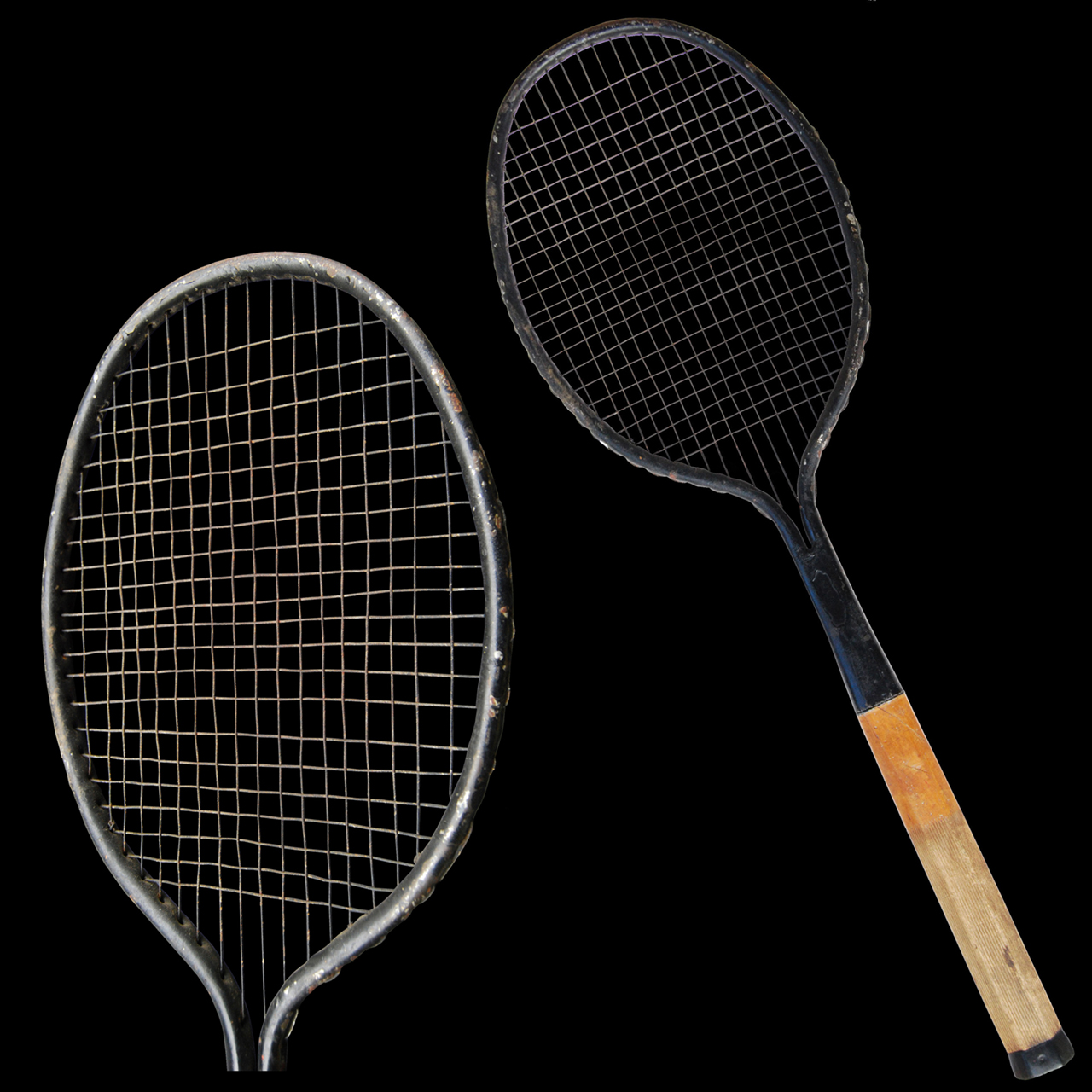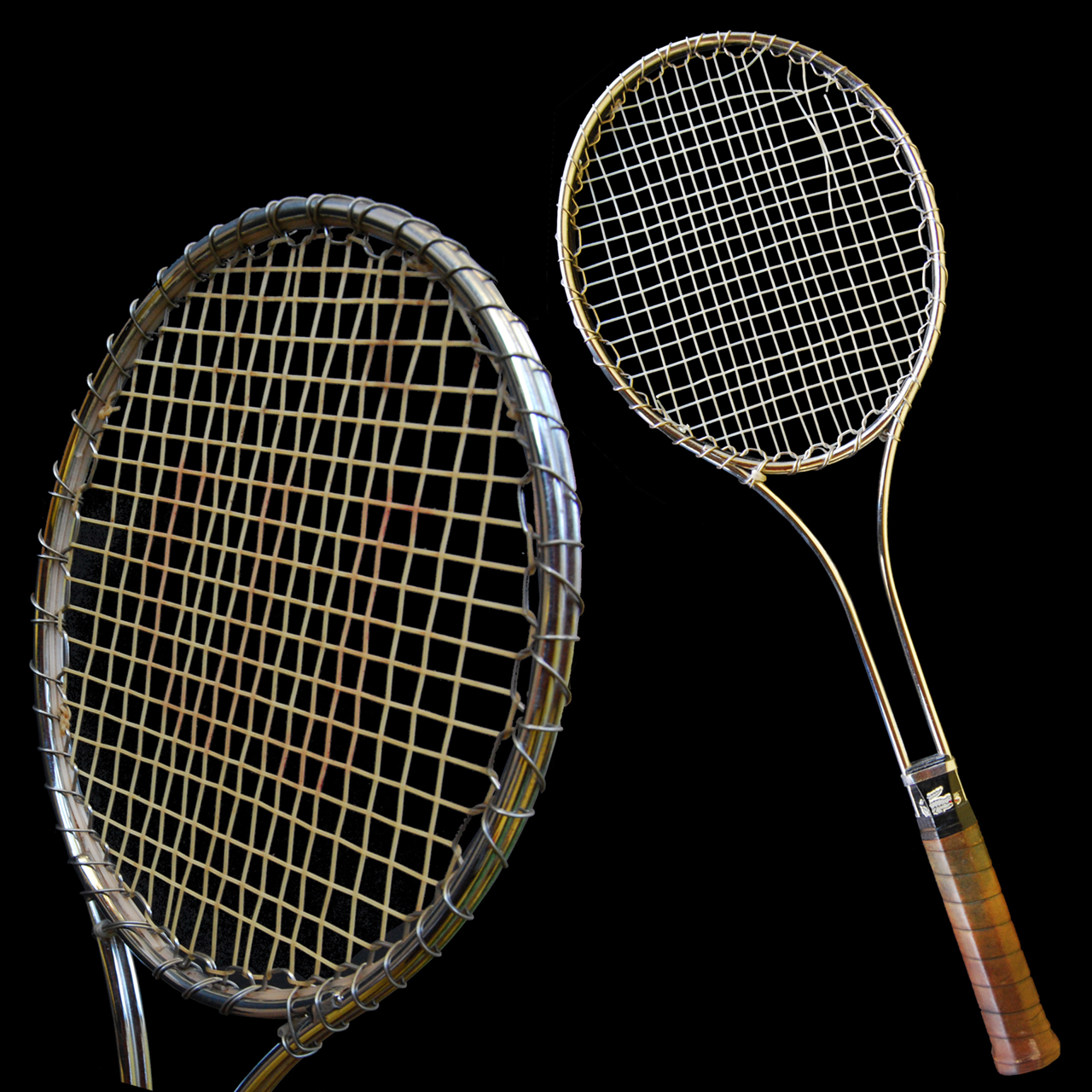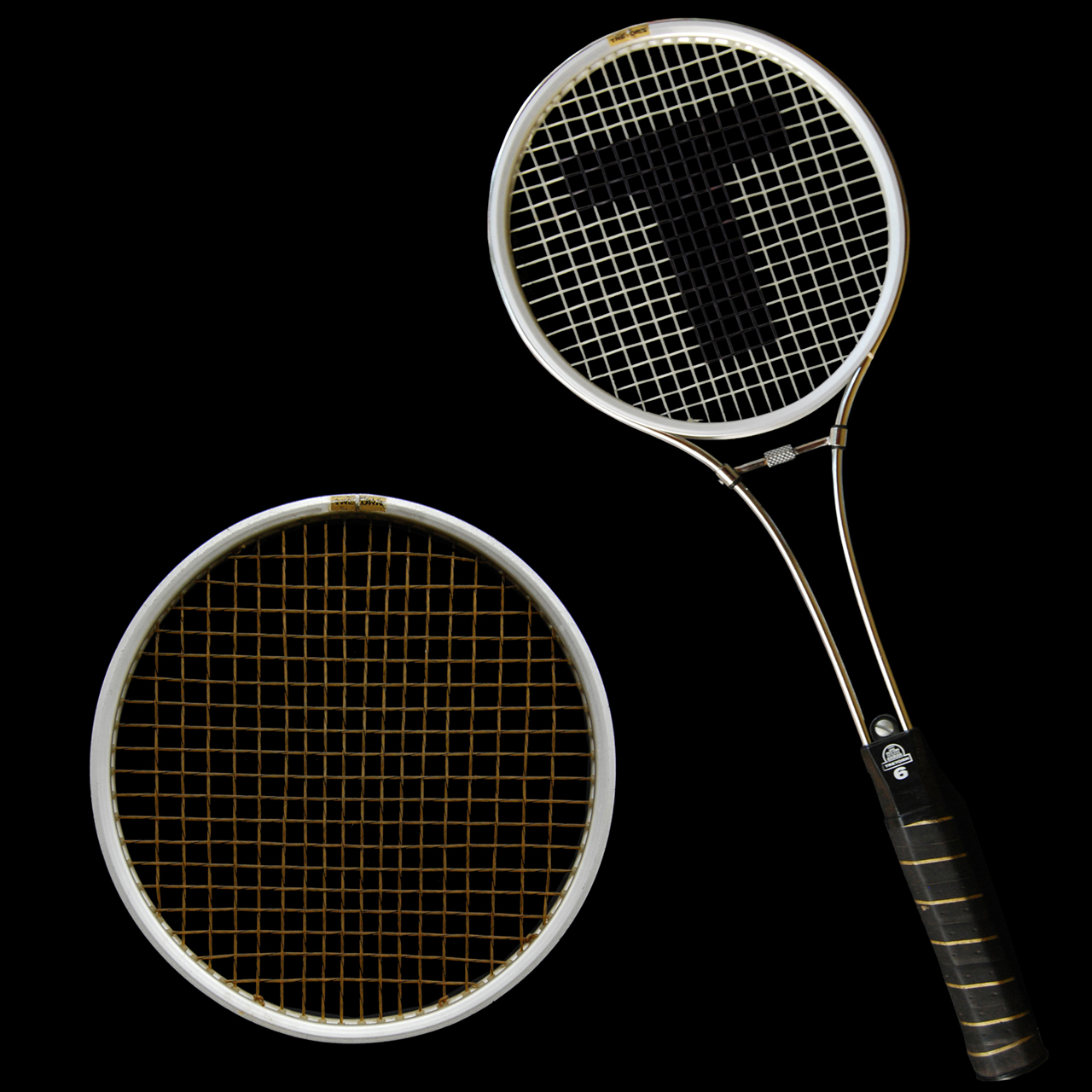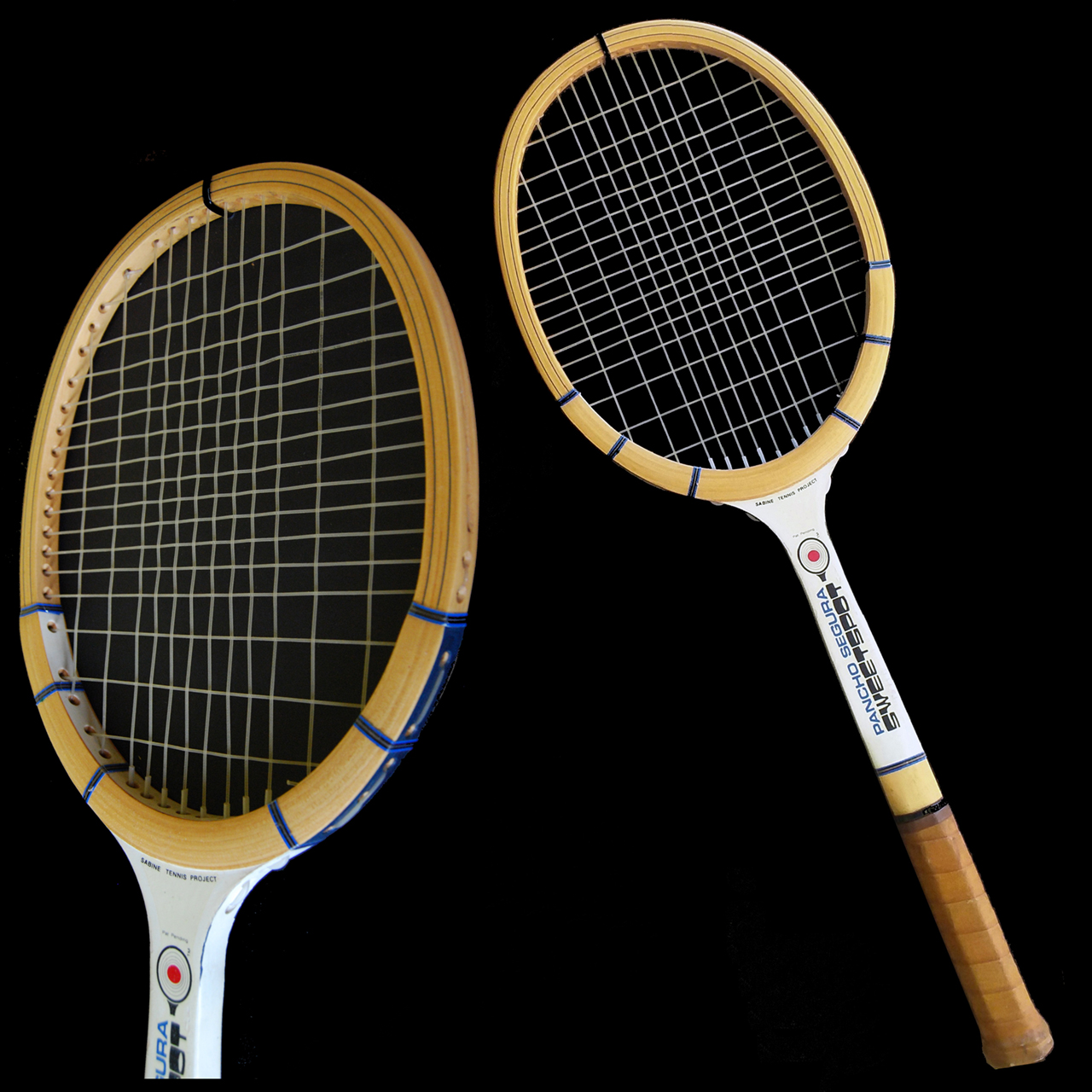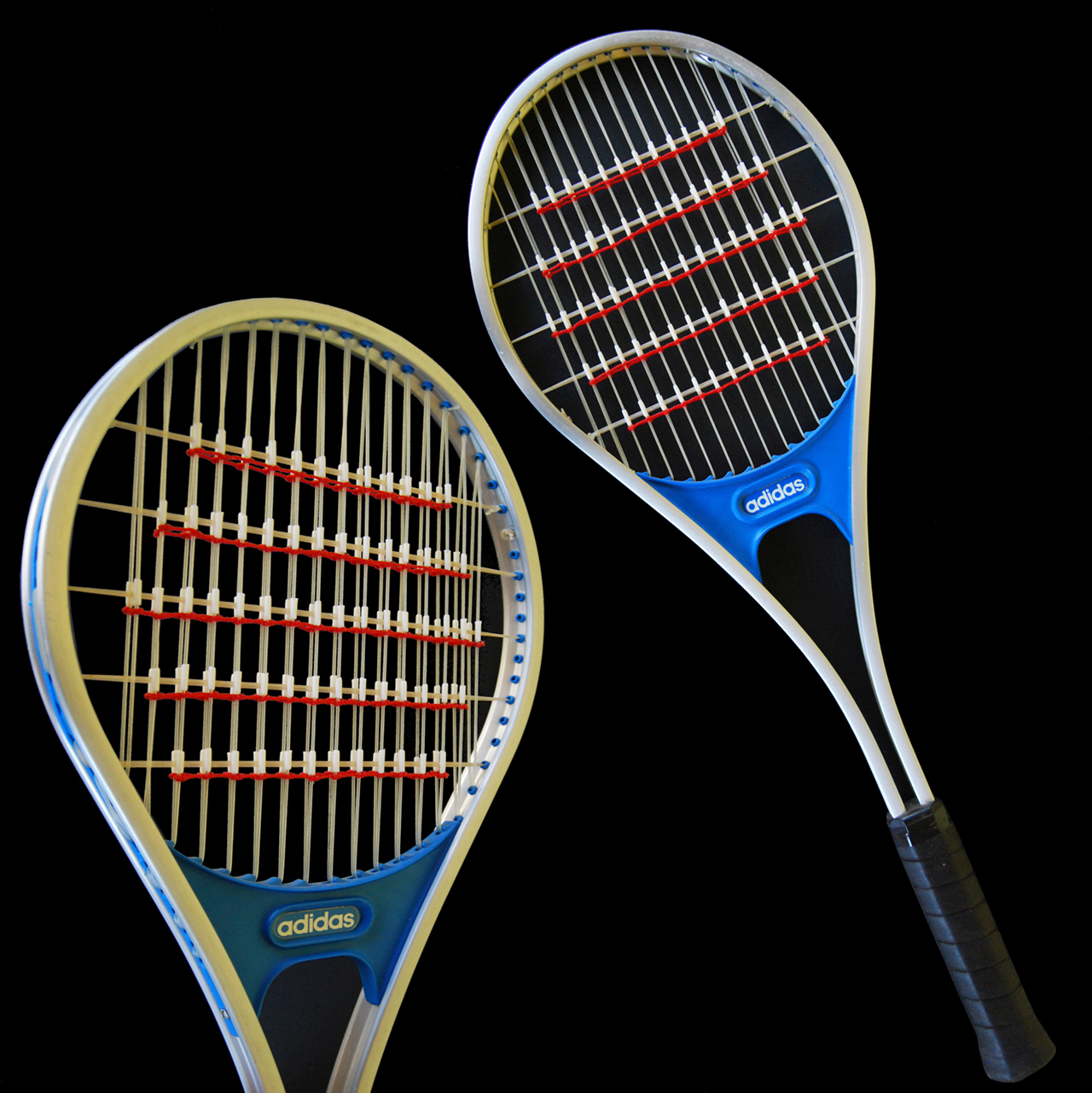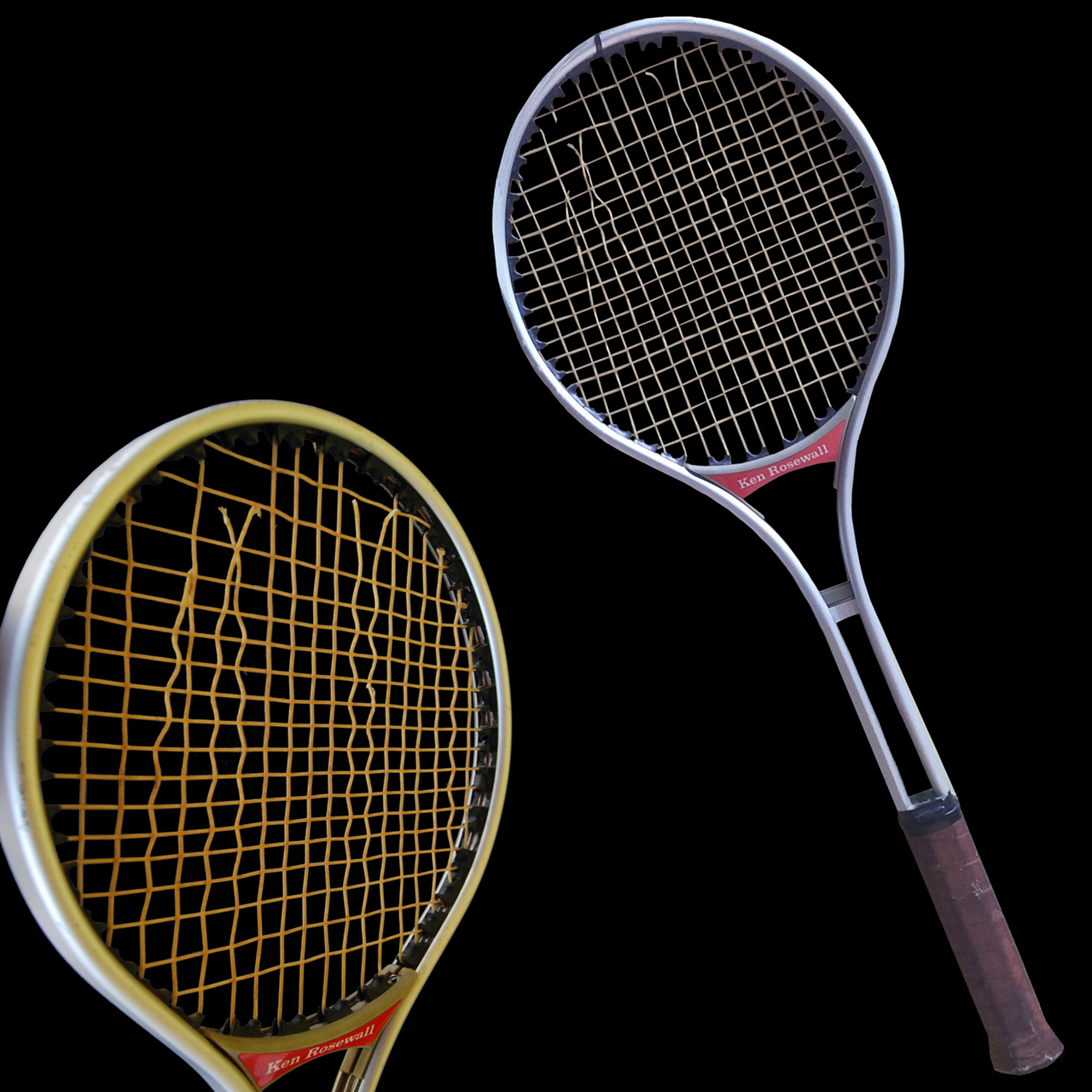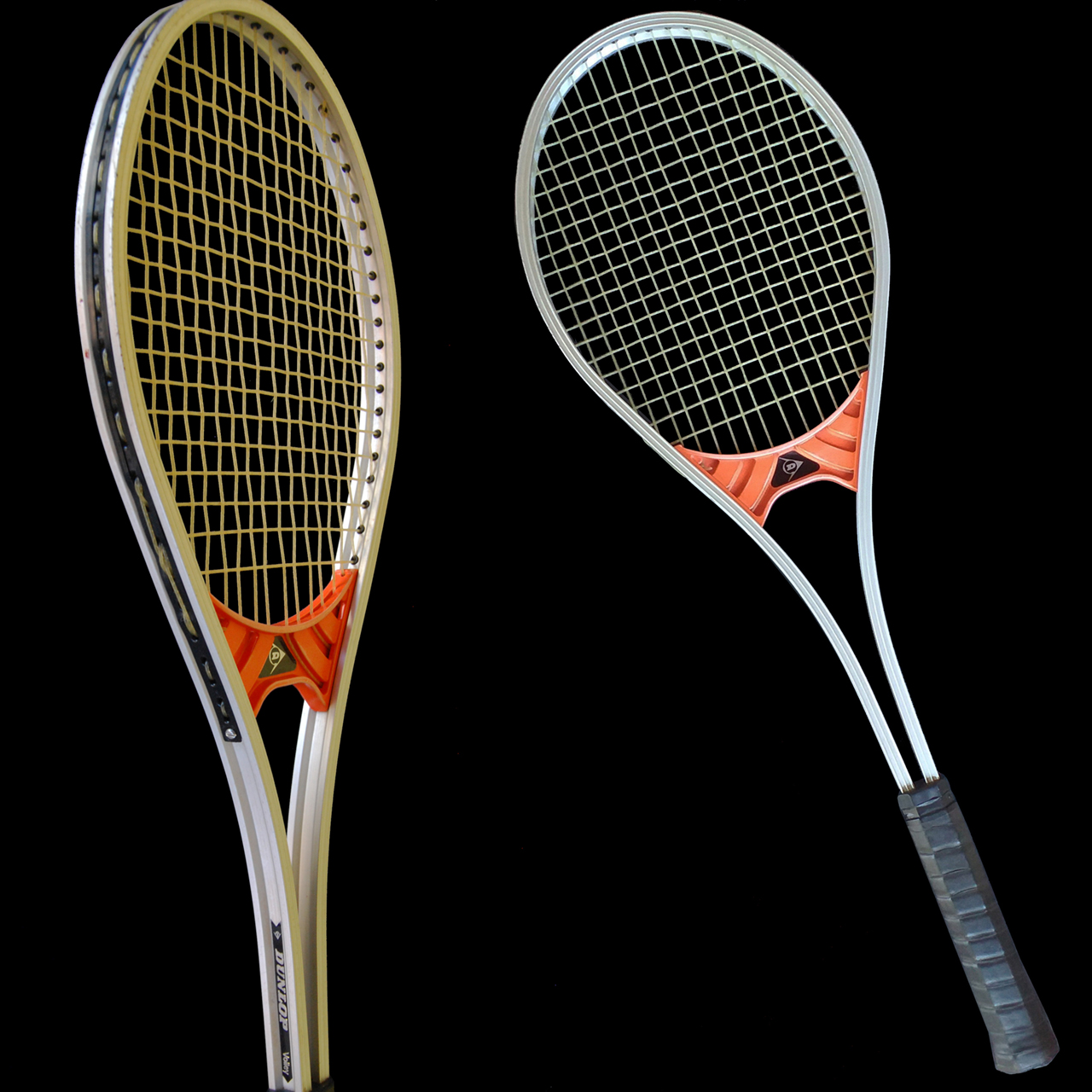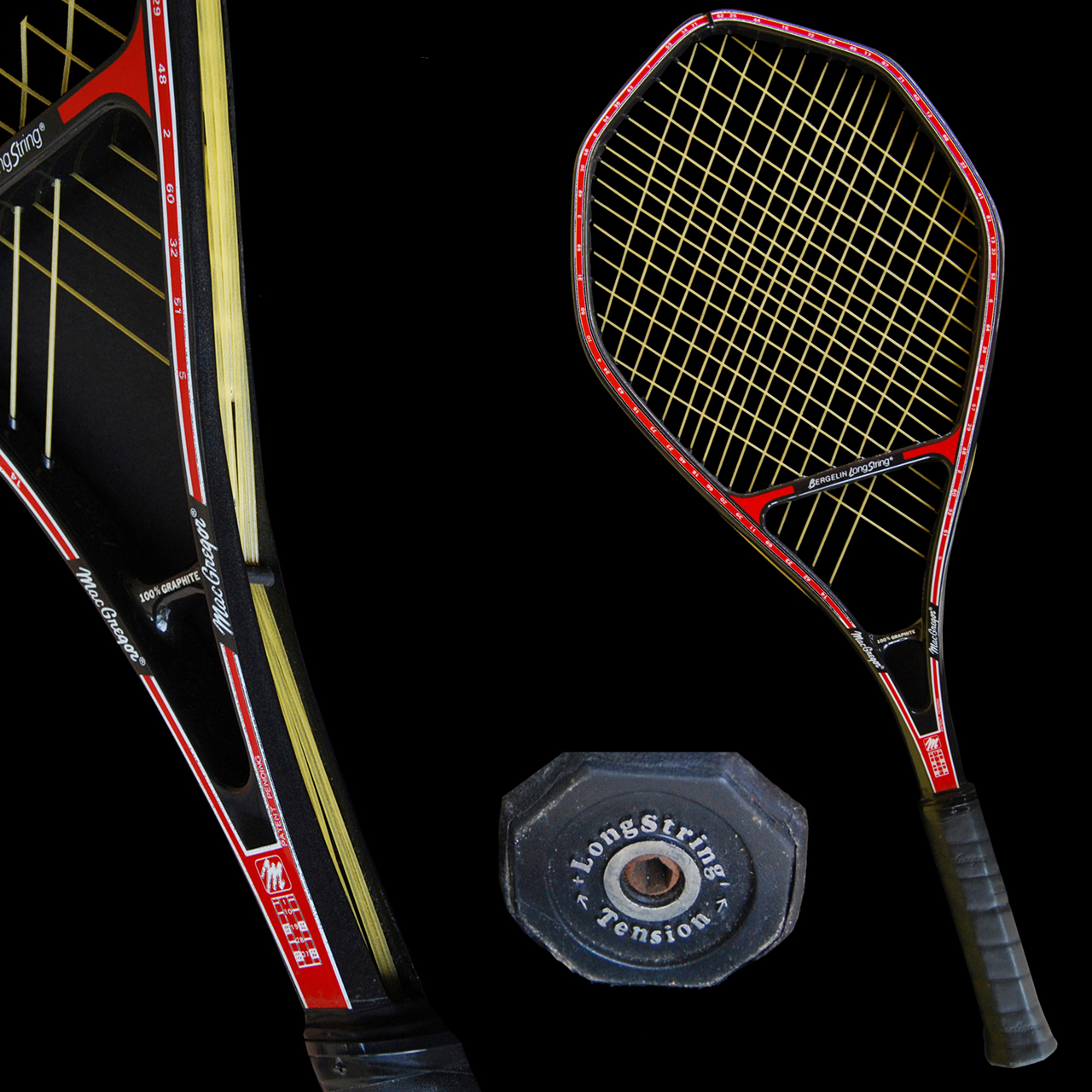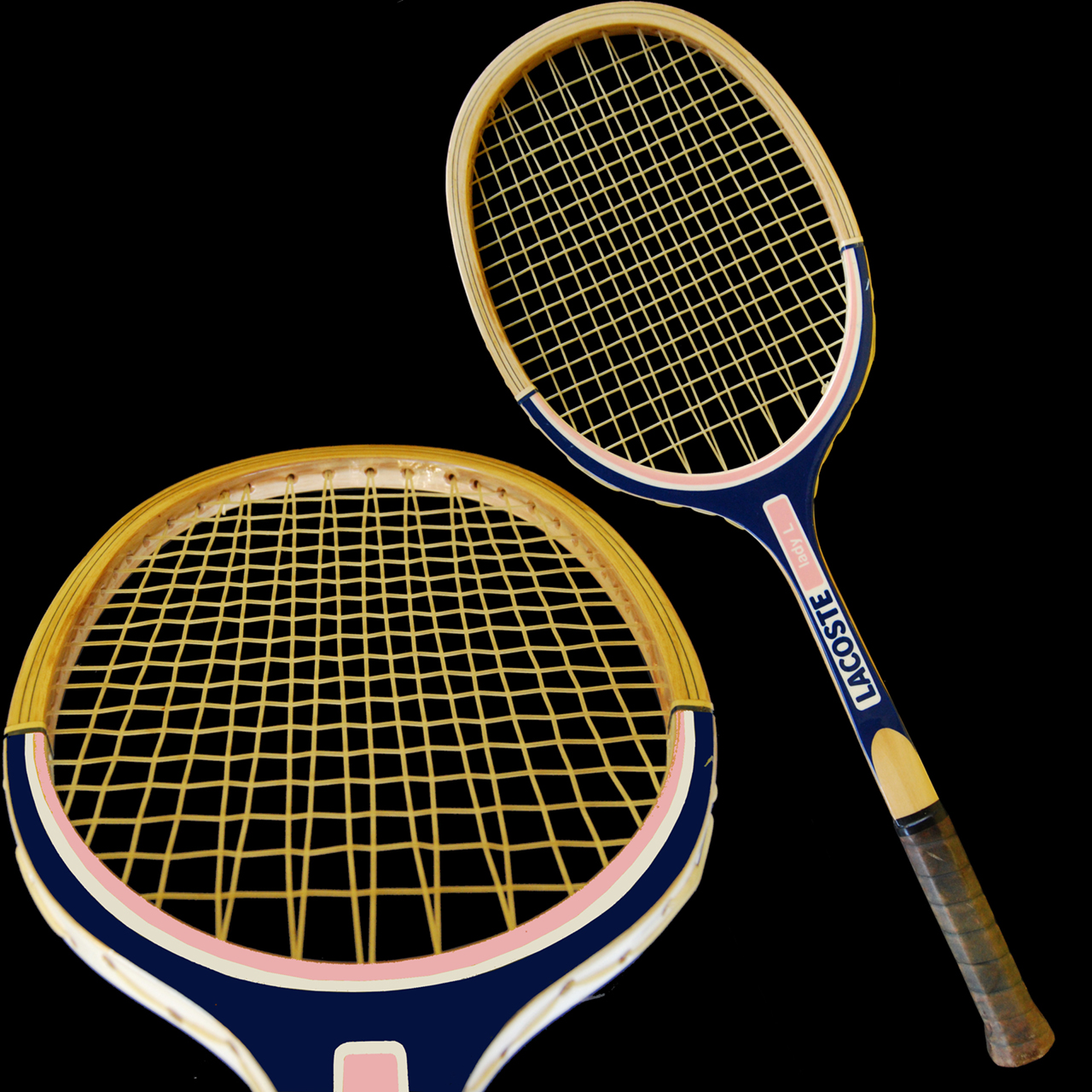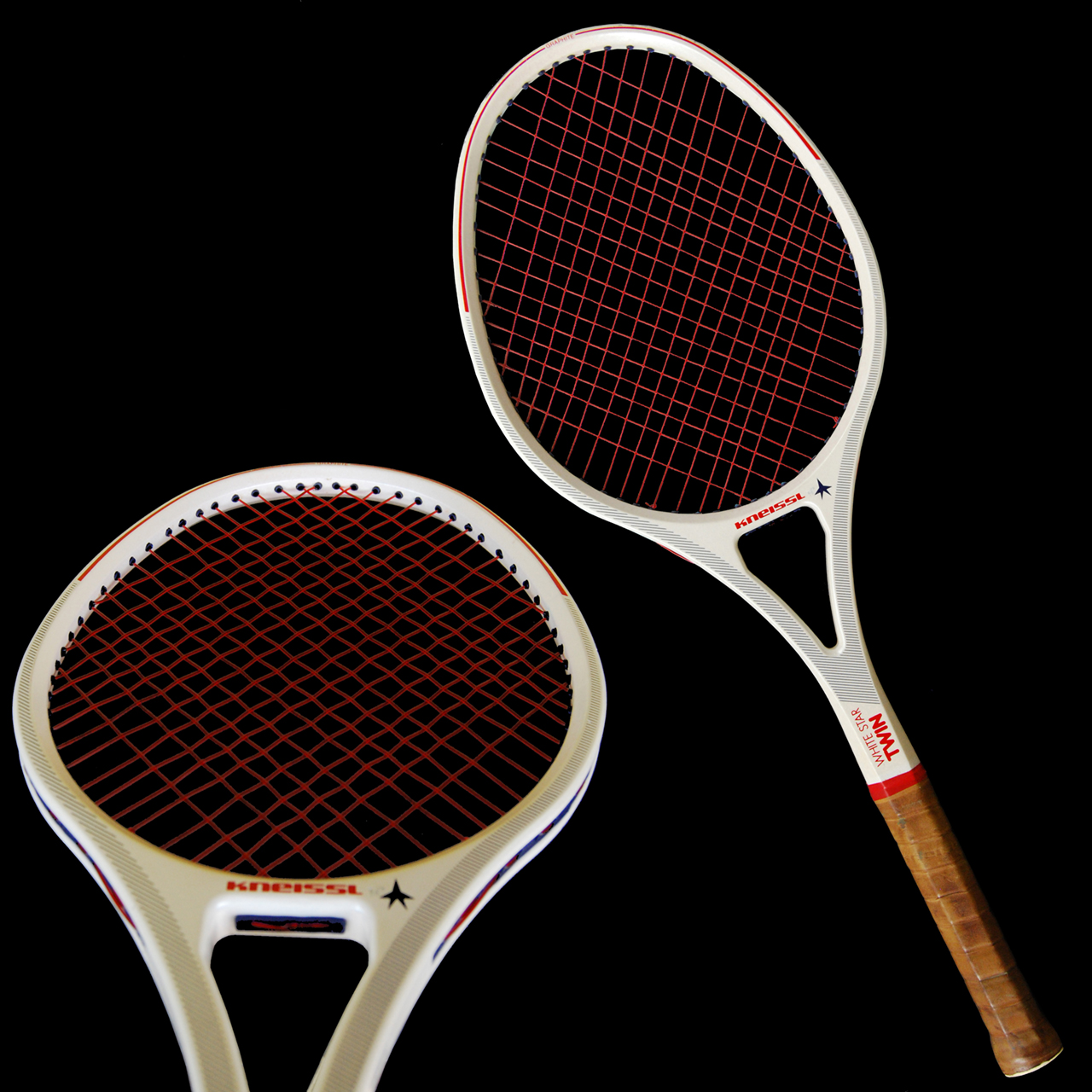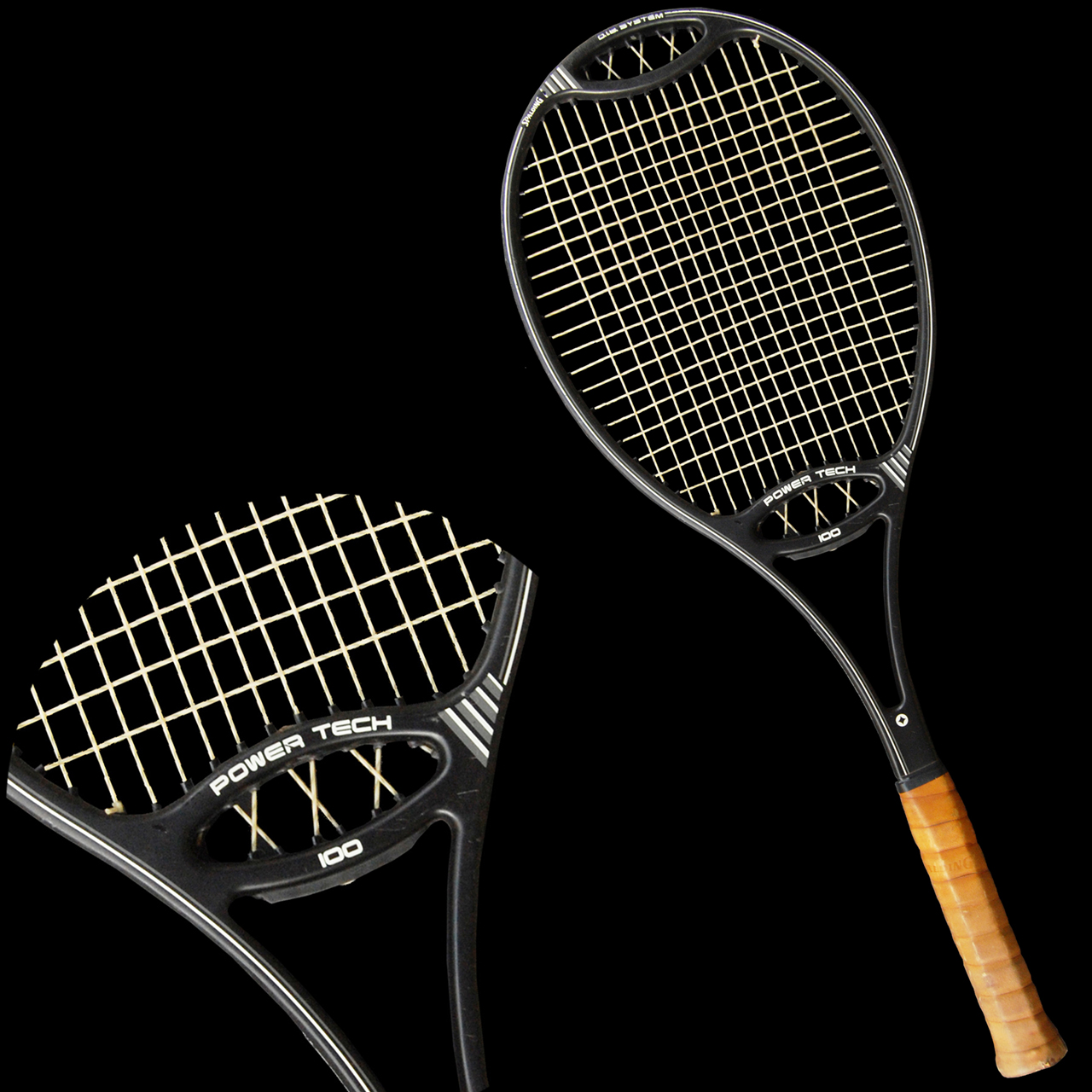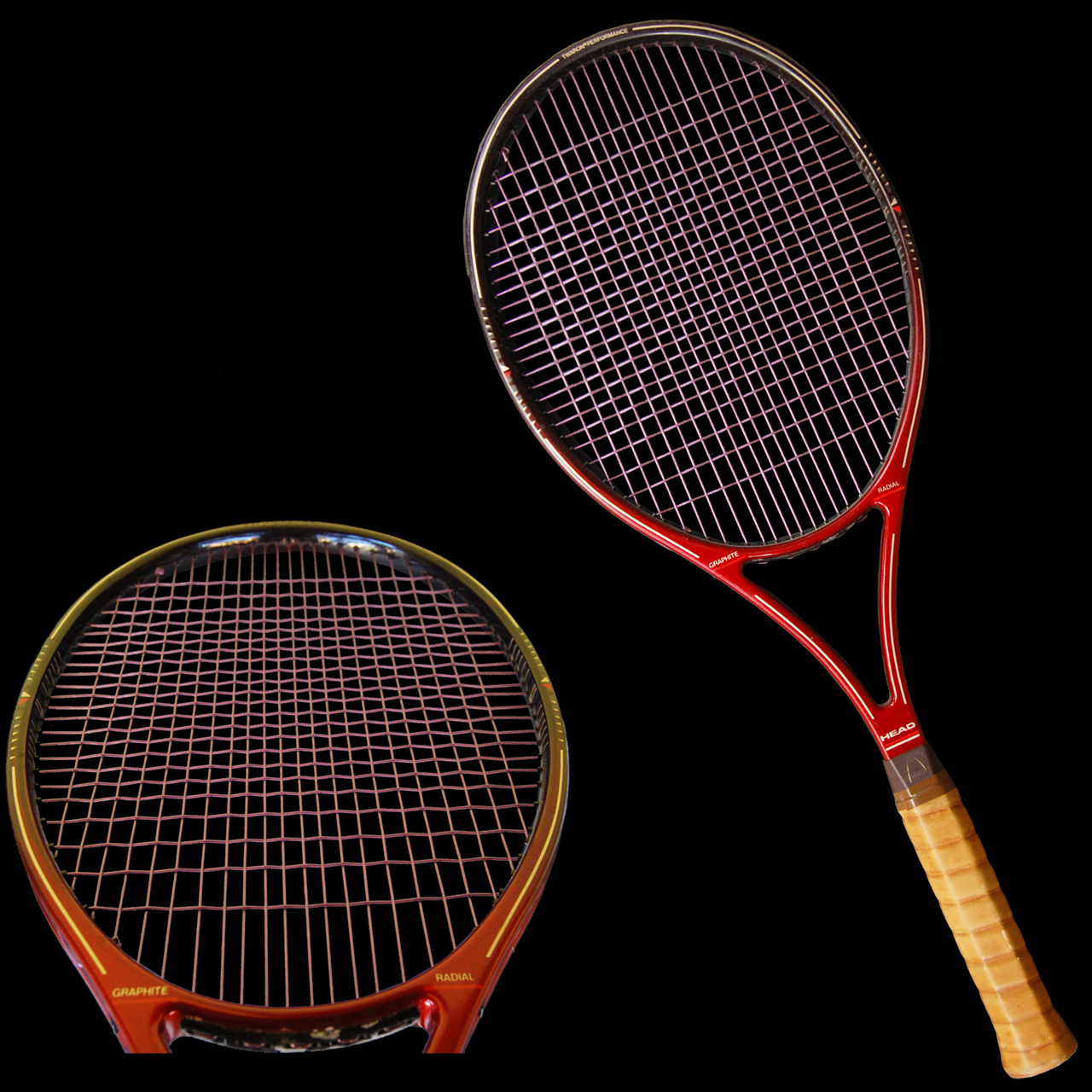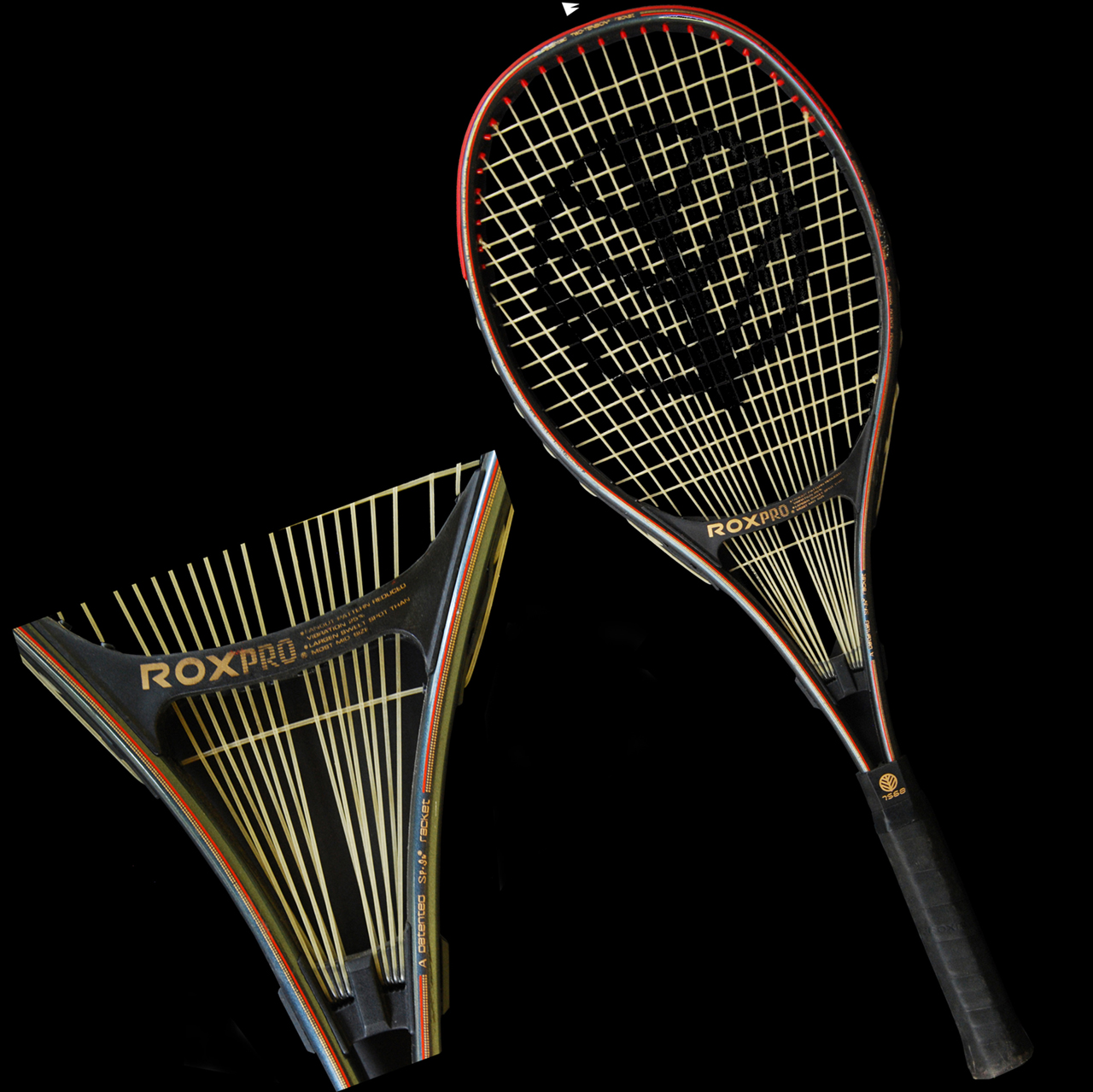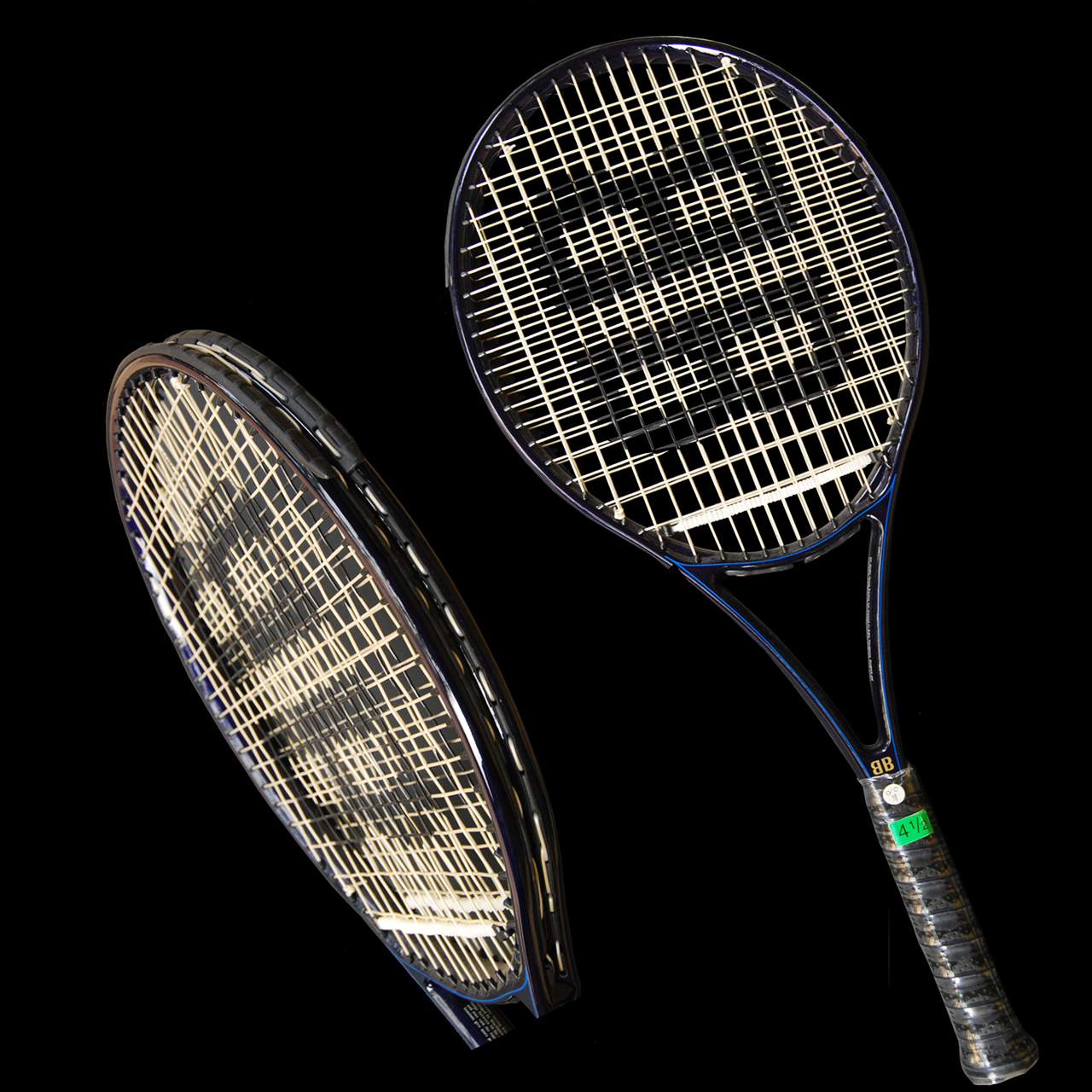STRINGS
Apartat cordatges
We can observe a set of rackets with different types of grips, string distributions, and specific strings.
Dayton: The use of metal in tennis racket design intrigued manufacturers as early as the 1890s. Breaks in wooden frames, deformation, and string breakage led to experimentation with other materials in racket construction. It wasn’t until the 1920s when Dayton Racquet Co. burst onto the scene with a marketable product, an indestructible racket with a metal frame and strings.
Lacoste Metall: Model invented by former player René Lacoste in the early 1960s, who sold the patented design to Wilson “T2000.” Its compact head had a smaller sweet spot, but it offered greater power and control compared to traditional wooden rackets. This made it a challenging racket for club players to use. The racket has an almost circular oval head and a wire string anchoring system inside the frame, making it distinctive and highly original.
Tretorn: Fully circular interchangeable inner frame system.
Sabine Pancho Segura: This rare Sabine Tennis Project racket features an open string pattern of 12×16 to accommodate a larger sweet spot and facilitate control.
ADIDAS 660: A model from 1975 used by Ilie Nastase in the 1977 Aix-en-Provence final, where Guillermo Vilas retired and declared that he would not play again with someone using this type of string. The following week, the ITF banned the double stringing. This double stringing excessively increased the ball’s spin in topspin shots.
Seamco Ken Rosewall: From 1975 with stringing inside the circular frame. The circular shape allowed equal horizontal and vertical tension without harming the frame.
Dunlop Voley II: Marketed model in Europe with the peculiarity that the strings pass through the exterior in the heart of the racket.
MacGregor Bergelin Longstring: Designed by Bjorn Borg’s coach, Bergelin, this semi-octagonal shaped model with diagonal strings allowed players to control string tension during the match using an Allen key. The model worked well, but the difficulty in stringing prevented it from becoming a widespread success.
Lacoste Lady: A braided type used since 1898, attempting to favor control and impact. This racket has the peculiarity of having four central strings sharing “grommets.”
Kneisel Twin diagonal string: Research has shown that diagonal stringing reduces vibrations by 39.7% compared to vertical stringing. This type of diagonal stringing is a good ally for those who suffer or want to avoid tennis elbow.
Spalding Power Tech: DIB system where the main central strings are shorter than in a conventional racket, so the output power is evenly distributed across the total playing
surface. Equalized power means more control. Since the main central strings are shorter, the racket can be strung with lower tension, resulting in more power and less vibration.
Head Radical Micro (pattern 22×23): The idea is excellent – enhance spin, achieve better control with a softer impact, and reduce vibrations. However, it required about 5 to 6 meters more string and 15 to 20 additional minutes for stringing, putting more pressure on the frames, making them less durable.
Rox Pro: Fan pattern stringing attempting to combine control and power. The result was a notable improvement in power but a difficulty in control.
Blackburne Double: Two in one! This racket didn’t have one string bed but TWO, reducing the risk of tennis elbow, increasing the sweet spot, and making contact more stable. However, the double-faced design made stringing difficult, and its high price certainly didn’t help it become popular among tennis players.
